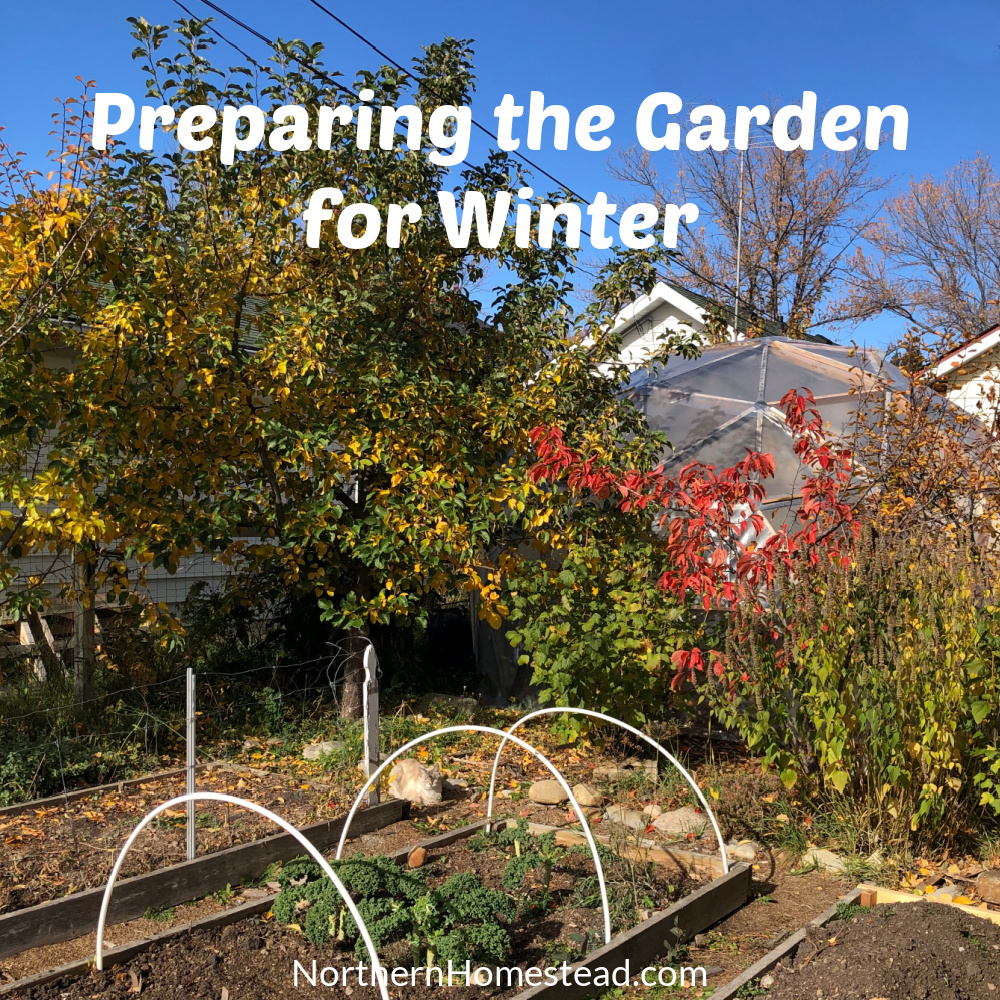
Preparing the garden for winter in a cold climate is essential for the soil and perennial plants. Since we are in Zone 3, winter temperatures can drop to -40 degrees. Although this extreme cold doesn’t happen often in our area, it can occur after a warm spell, when most snow has melted. Therefore, protecting the soil and plants is particularly important here.
Preparation may vary depending on your weather conditions. However, following the steps we take can give you some ideas.
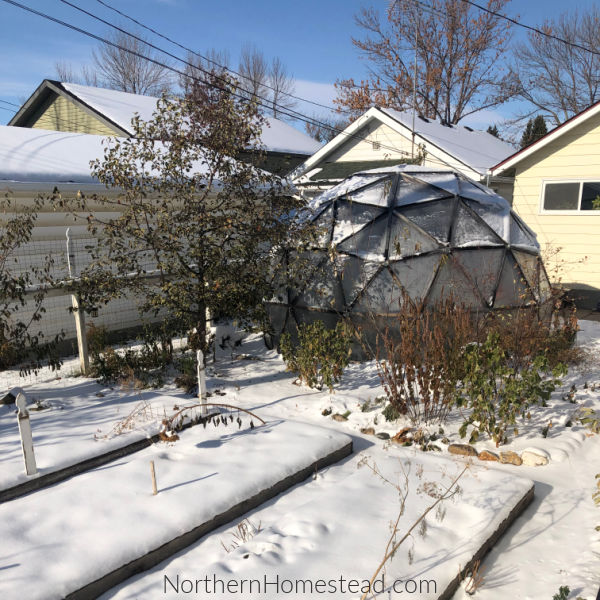
Our goal is not to add more tasks to our schedule but to make gardening more effective and straightforward in the long run. In a permaculture garden, we avoid extensive soil cleaning or tilling; instead, we focus on covering and protecting the soil. This practice enhances soil health and helps perennial plants endure the winter more successfully. Healthy soil and strong plants make gardening more productive and enjoyable.
Harvesting and Planting
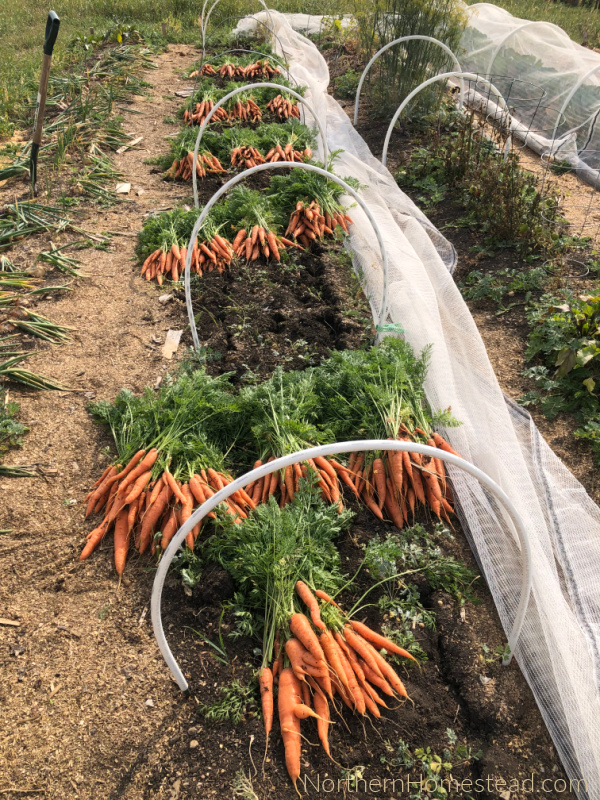
Before the frost kills everything, we want to ensure we harvest our produce. After all, that’s why we grow an edible garden. However, plants react differently to frost. Knowing the difference, we can extend the harvesting window.
Cucumbers and summer squash must be harvested first; they do not tolerate temperatures near freezing. Tomatoes and peppers will be next on the list. Check out the article on how to ripen green tomatoes indoors. If possible, harvest them before any frost could damage them.
Potatoes, although also a summer crop, can be left in the ground until the tops die off; they only need to be dug out before the ground freezes.
Last on the list to harvest are the frost-hardy crops. Some of them become even better with cooler temperatures. Carrots become sweeter and can be left in the ground with protection even over the winter. Learn more about growing food—carrots. Brussels sprouts become more tender after there is a real freeze.
Beets are also hardy, but store better if harvested before the frost.
Spinach can be planted in late summer to overwinter in the ground. Spinach survives unprotected (just regular mulch) in our Zone 3 garden. Read more on growing overwintering spinach here.
By harvesting greens (herbs and green onions too), cut the tops and leave the roots in the ground. You never know how many will survive the winter and continue to grow in spring. These greens will provide you with early salads and will protect the soil from weed overgrowth long before you can start planting.
We intentionally let herbs like cilantro and dill go to seed. They seem to grow better than when planted in the spring.
Garlic is planted a few weeks before the ground freezes. You can read all about it in the article Growing Food – Garlic.
Only when outdoor temperatures drop to -10°C (14°F) do we consider the garden and greenhouse done for the season. Read also how to prepare the greenhouse for winter.
If your area does not get temperatures that low, or it is just an unusual event, you can keep harvesting all winter long. Learn more about it in the book: The Winter Harvest Handbook: Year-Round Vegetable Production.
Cleaning the garden before winter

Cleaning the garden is much overrated. It is better for the garden, the insects, and your back if you leave most of the cleaning till spring.
Here at Northern Homestead, we like to get most of the annual plants out and into the compost. They tend to make a big mess, so it is good to clean them up. This way, the annual garden is also ready to be mulched. Read more about it below.
Legumes (peas, beans, peanuts, lentils, alfalfa) are nitrogen fixers. To take advantage of this wonderful natural fertilizer, cut off the tops and toss them into the compost pile, leaving the roots in the ground.
Perennial plants are mostly left as they are in the garden. We do not worry about cutting back all perennials or cleaning up the leaves; plants survive the harsh winters better if we leave both.
However, we do cut back most of the perennials’ seed pods; otherwise, they will seed themselves all over the garden.
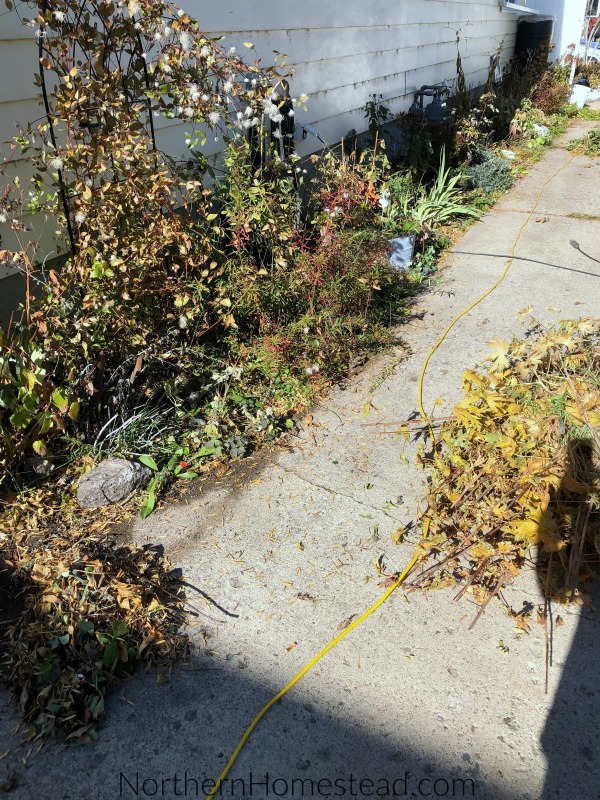
When cleaning the perennial garden, we consider snow removal. We cut back anything that reaches into a path and perennials in the way of snow piles.
Most plants, though, are left right where and how they are, along with fall leaves that naturally protect the soil and provide a hiding place for beneficial insects during the winter.
Cover the garden soil with mulch
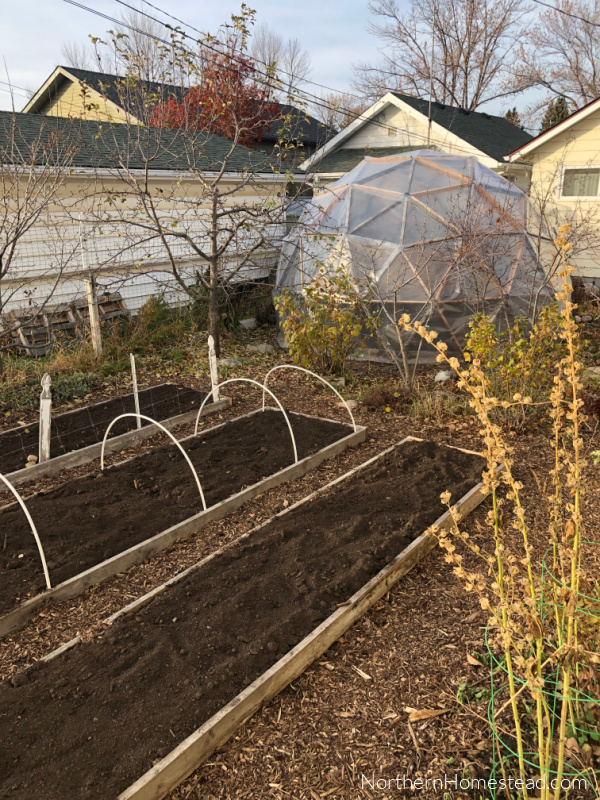
Garden soil is our most valuable resource. Protecting it is a high priority.
If you are used to till the soil at the end of the season, we invite you to read more about To till or not to till the garden.
Garden soil is a living organism; it gets cold, too. A clean and exposed garden will struggle. Microorganisms will die, worms will look for a new home, beneficial insects will leave, and part of the soil will be blown away by the wind, leading to soil erosion.
However, if we cover the garden, the soil will improve yearly.
How much material is needed, and what should be used for a cover?
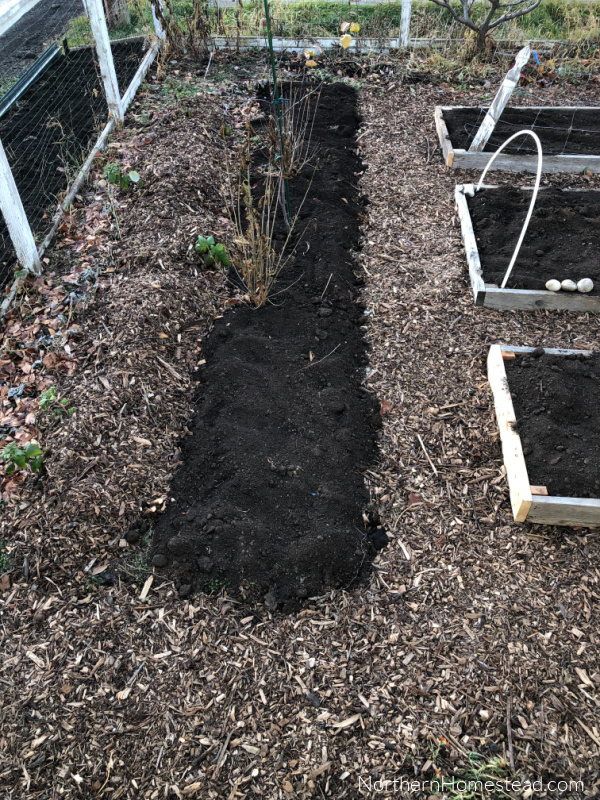
The best type of mulch for your garden is the one that is readily available to you. As a general guideline, you should aim for about 1 inch (3 cm) of compacted material each year.
Compost is one of the easiest materials to work with. You can use all-plant compost or a mixture of well-rotted manure and compost. Aim for approximately 1 inch (3 cm) of compost annually.
In dry climates, wood chips can be an effective mulch option. Be sure to choose the right type of wood chips for your garden, especially since you will be planting in the spring. Again, plan to apply about 1 inch (3 cm) each year.
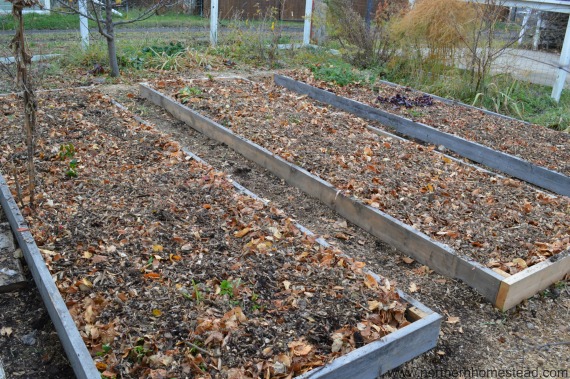
Shredded leaves or hay, the Ruth Stout method way, can also be used. If you use loose material, add more.
Remember that there is no need to turn the soil in either the fall or the spring. A covered garden turns into a no-till garden right away.
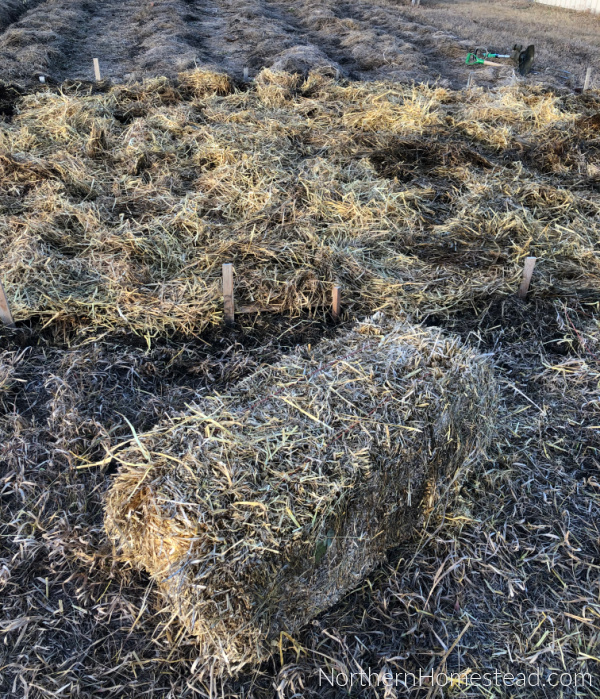
Experienced gardeners living in the mountains of Kluane in the Yukon Territory shared with us: “We use a blending of bio-intensive, permaculture, and no-till on our homestead. Our experience over time in our garden has shown us that any mulch other than compost needs to be applied after the plants reach a certain size in early summer. When we leave other mulches covering our beds over winter, we provide nesting habitat for mice, especially voles, which explode in population and cause significant damage to our garden. Additionally, mulch applied in autumn or spring has created significant cutworm issues for us. There is no doubt that no-till with mulching has many benefits for soil health and structure, but like any gardening method, there are some limitations”.
Protect tender perennial plants
Covering the garden soil also helps the perennial plants survive the winter better. Mulching also prevents winter kill. If you have tender perennials, gather more leaves around them.
Strawberries can be buried under woodchip mulch. Only healthy plants will survive the cover in spring, creating a healthier patch. Most years, though, we leave strawberries uncovered, just whatever leaves accumulate around them.
Most perennials are covered with leaves falling and blowing around. We simply don’t clean them, and they are automatically covered.
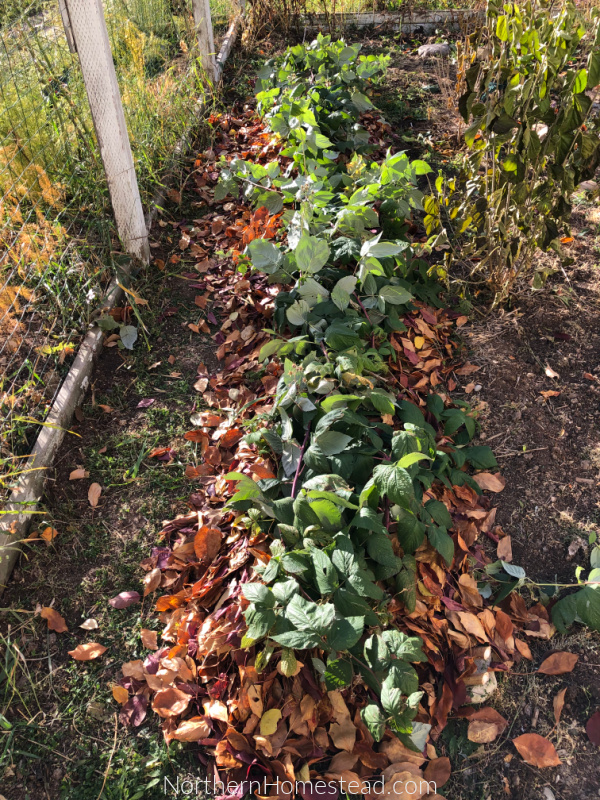
Primal cane raspberries need a thicker layer. Cut down the canes that had fruit the past summer, and cover the plants with leaves, straw, or a frost blanket. As I did in the picture above, you can also use the canes to cover the plants. Read more about growing raspberries here.
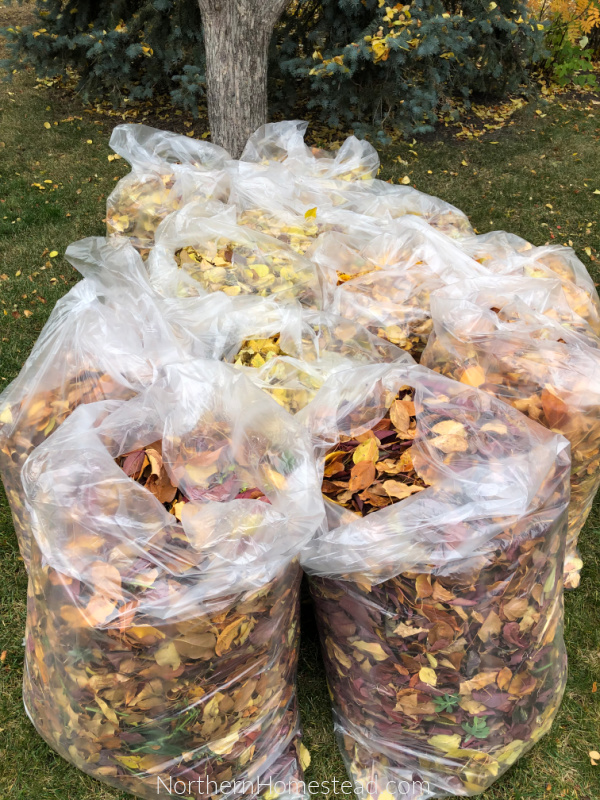
Some plants need more protection. They are borderline hardy to our zone 3 garden. To cover blackberries, kiwi, grapes, and lavender plants, gather leaves in bags and place them over the plants. We use large bags that are filled about halfway. That way, the leaves can be airy, and the bags are not as heavy.
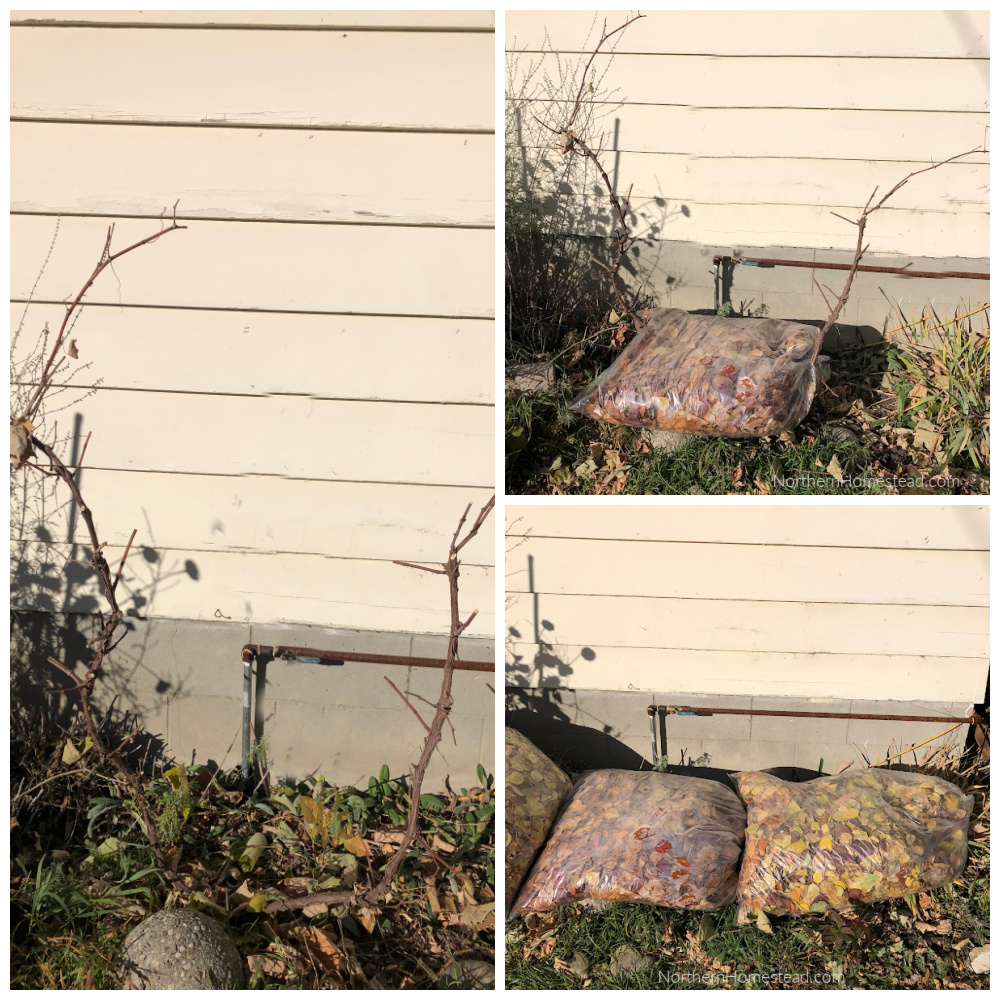
In late fall, prune the grapes, gently lay them down, and cover them with the bags of leaves. Read more about growing grapes in a cold climate here.
These leaves can be used as brown material for composting all summer or spread as mulch, for example, on the raspberry path. The only leaves that you don’t want to use are black walnut.
Water trees, shrubs, and perennial plants
When trees, shrubs, and perennial plants are put to sleep in the autumn, we want them to have a frozen root ball. That way, when they wake up in the springtime, the roots can access moisture. Since water collecting systems need to be emptied for the winter anyway, this is a good use for the water.
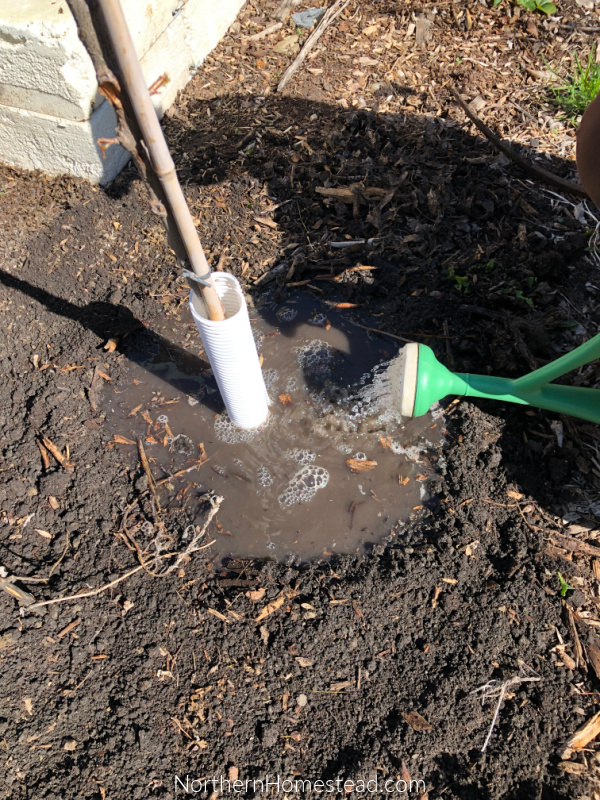
Note that you don’t want to water the trees and shrubs too early; it might prevent them from going dormant. Water in late fall, just before the ground freezes.
As soon as snow covers the ground, it’s also a good idea to pile some snow around tender plants. Snow protects and also gives much-needed moisture in the spring.
If your weather allows you to continue growing a garden even in the winter, here are some inspiring books for winter gardening: The Winter Harvest Handbook, Backyard Winter Gardening, and Year-round Vegetable Gardening.
We invite you to subscribe to Northern Homestead and follow us on Instagram, Facebook or Pinterest for the latest updates.

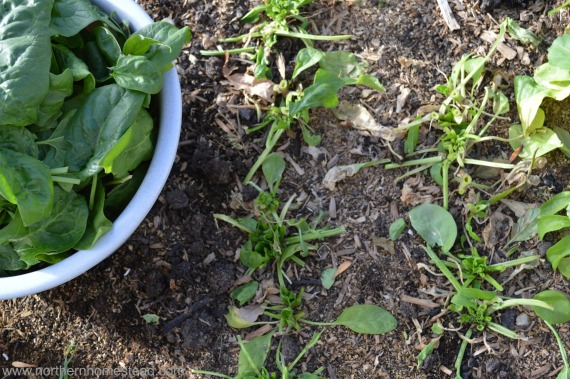





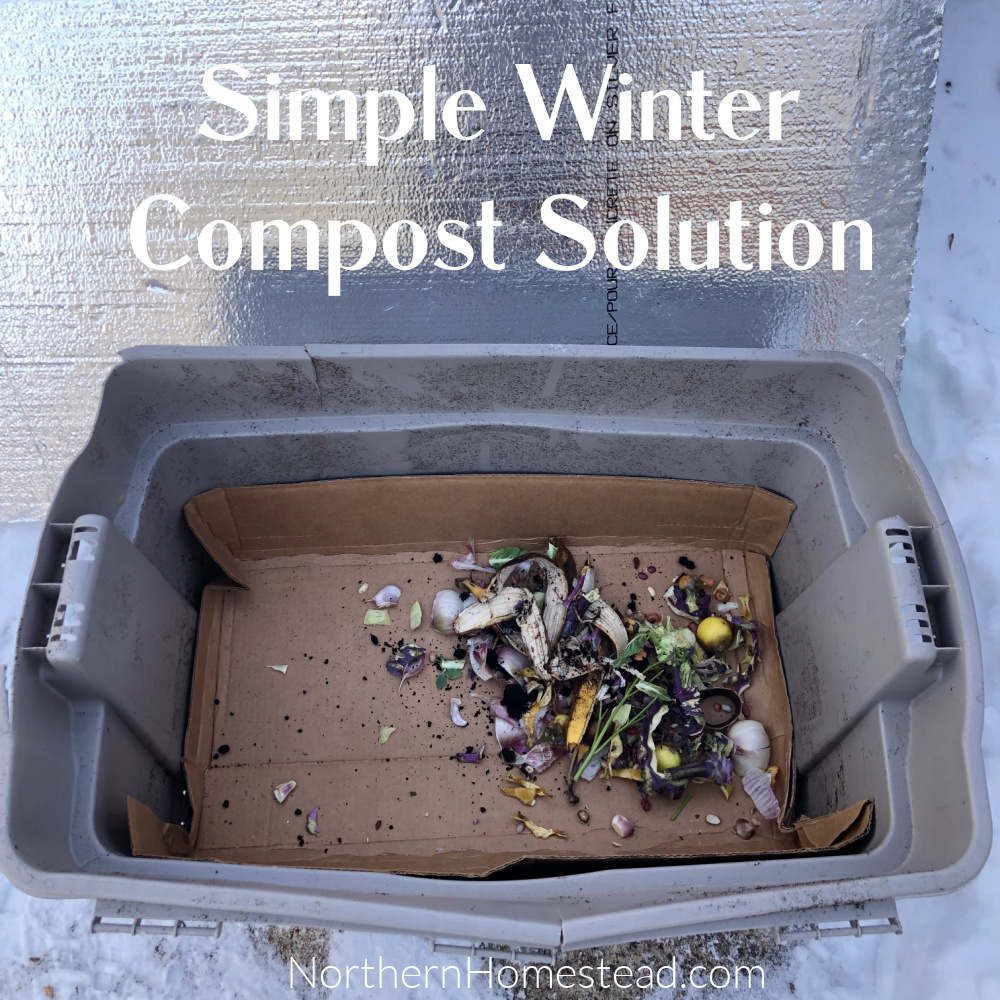
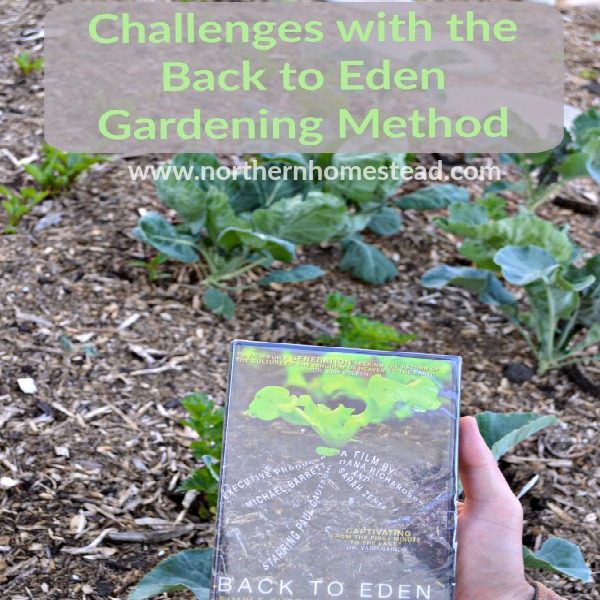
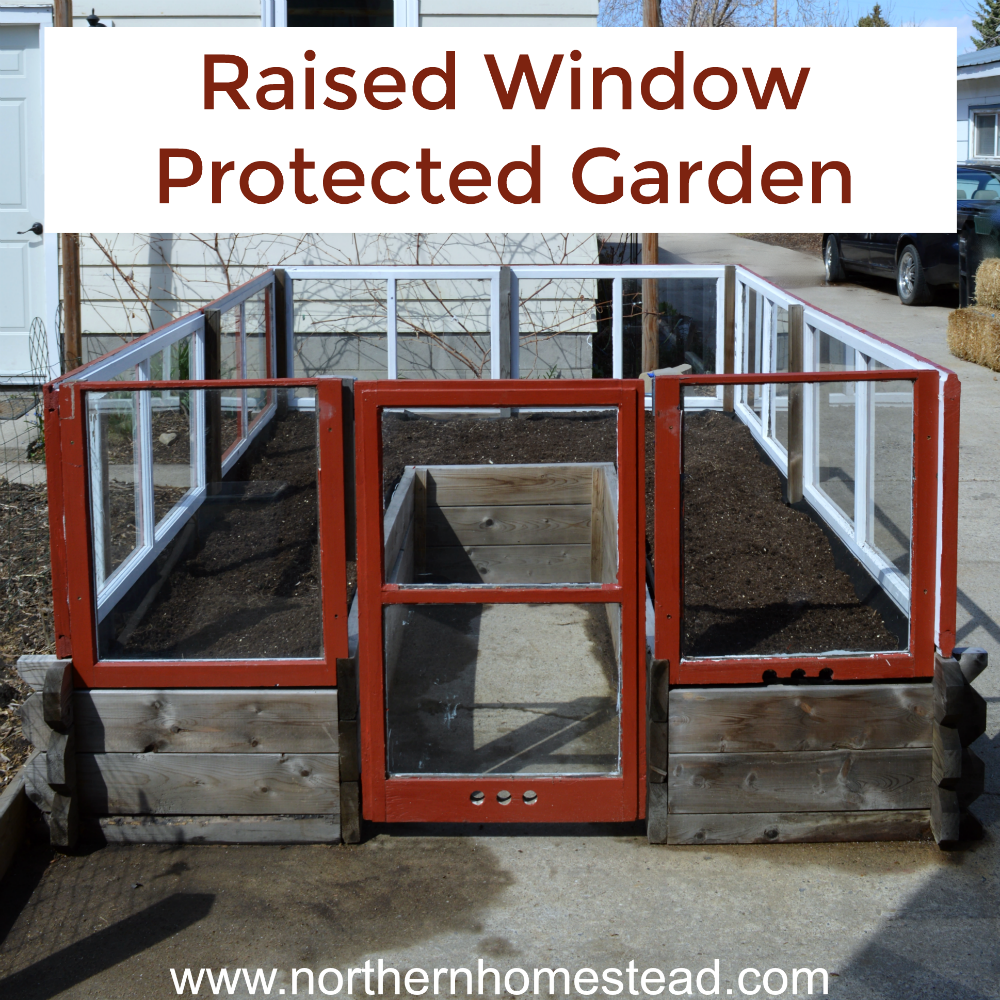
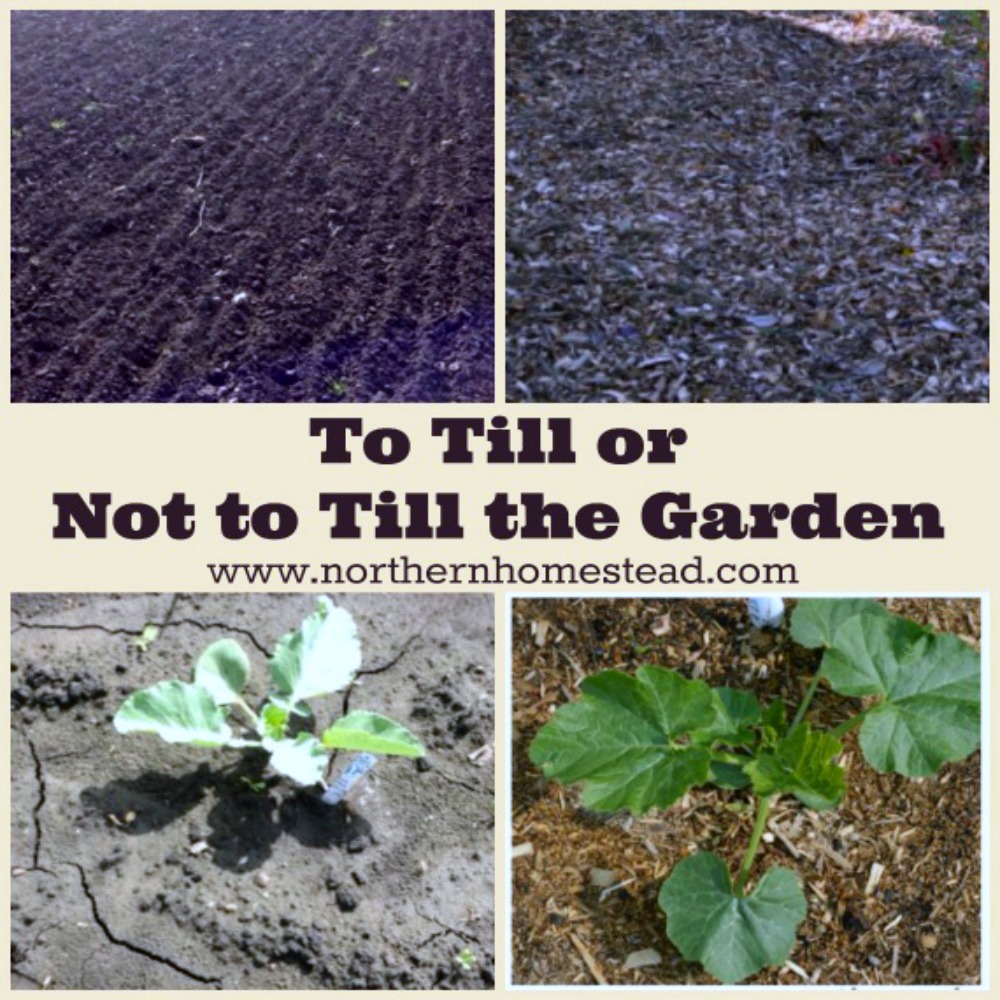

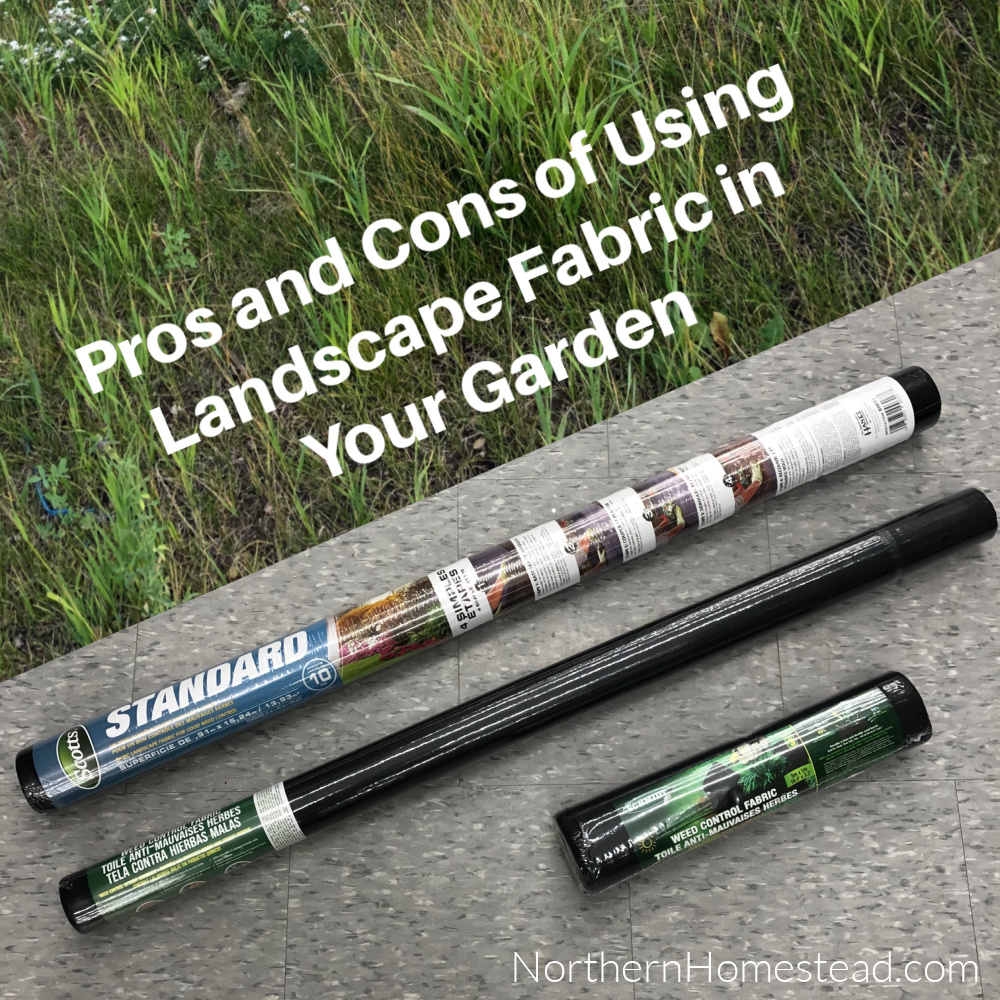
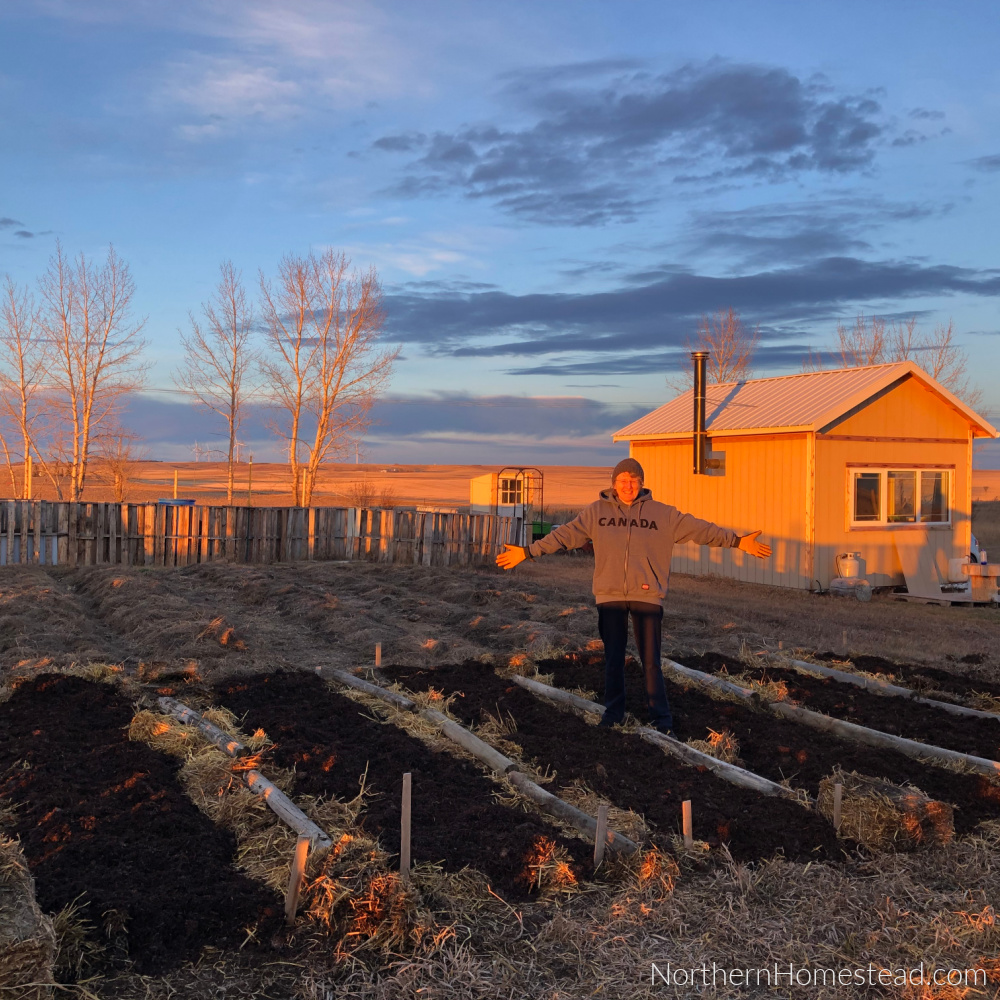

Anna, you always have some great post about gardening. It’s a shame that I don’t have one! I love the party about God in His wisdom in making the leaves Fall – but we rush to clean them up. Great thinking here!
Thank you Zan! Hopefully one day you too will have a garden!
I like the way you use the leaves to cover your garden soil for the winter. I do the same with my tiny little garden. 🙂
If there is an abundance of leaves, why not use them, right!
we used leaves in the fall, the next year we had worst year for slugs ever. they hatched like crazy. i won’t be doing that again
This may seem strange but for some reason, I like to rake leaves. We have such terrible soil on our property, it’s the leaves composting into the beds which have helped all these years. God is awesome, isn’t He!
He sure is! Rakeng leaves for compost is totally appropriate. There are lots of neighbors who seem to like rake leaves, I just ask for their bags afterwards to put in my compost ;).
Anna, you always have amazing gardening tips that many of which translate to any gardening zone. I so enjoy seeing your pictures, they are so different from what I see here in southern California. Thanks you. 🙂
~Lorelai
Life With Lorelai
Glad you enjoy them and find something helpful for your garden too.
I love reading your posts. They are so helpful and encouraging to me here in Eastern Ontario! Zone 4 …. If you can do it, so can I 🙂
You made my day! We so want to be an encouragement, and always happy to hear if what we share is helpful.
Great post, Anna! I never knew that you should cover the soil – never thought about it being living and getting cold, too!
I am afraid that to many people do not know or think about it.
Winter prep is such a big deal here in AK! I sometimes feel like it’s all we do. Great list and thanks for sharing at the Homestead Blog Hop!
Anna, if my garden is covered with snow from November to February (zone 4/5) do I still need to cover my garden with leaves? Thanks (Okanagan Canada)
In nature soil is always covered. You can grow a cover crop, or use mulch. Snow does act like a cover, too. The idea is to never have soil exposed to the elements. Hope this helps.
I’m new to having a garden as this year was my first time. I didn’t know it should be covered for the winter. I have a lot of leaves on my property so will put a layer on my beds. I wonder should leaves also remain on our grass and flower gardens during winter. We’ve always cleaned up leaves in the fall so now wondering if we’ve been wrong all these years. Also an experienced gardener told me to cover my garden with fresh seaweed for the winter so wondering what you think of that idea. Awesome website. So glad I found this great source of information.
Welcome Allison! Glad you are finding the information helpful. I have no asses to fresh seaweed, so we just use wood chips or leaves, whatever is available. In the flower garden for the most part the wind does the job for us. I just don’t clean up the leaves, this way the garden is covered and beneficial insects have a place to hide. I do clean the grass though, just so I have more leaves to cover things that I want to be covered.
I’m new to your blog and am trying to convert my garden to a no till one.
When you leave the leaves on the garden over winter do you then clean them up in the spring so that the bulbs can come through?
As I understand you are talking about the perennial garden. If the leaves just lay loosely on the garden bed I might leave them, If there are too many so that the soil can not breath, nor bulbs come up, I remove them. Just use common sense, there is no right or wrong if we keep things natural.
This is my first time gardening in Zone 3b…lived in Texas for many decades and way different gardening. I appreciate the information you presented and will definitely put it to use. Not sure if you know anything about this but, I had some tobacco seeds and planted them just to see if/how they’d grow. To my surprise, the plants have done very well and the leaves are on average about 6″ long, very healthy looking. They have survived the first frost, but do you think they would survive the winter? At any rate, I am going to pile leaves on them and hope for the best. I always get a lot of great information from your page, thanks!
Thank you for your kind words. We don’t grow tobacco, so I don’t know anything about it. But pile up leaves and hope for the best is what northern gardeners tend to do a lot. Good luck.
Well Thanks for all the great information you put for your friends to read, enjoy and implement them in their garden. Today the weather is so great in Kitchener and we all are enjoying and checking the garden for last time as to what is left must be done. Being Friday and great weather with lots of tomatoes, peppers,onions etc all in the House. I decided to use my Super Butternut squash for soup and Pizza with garden bounty and enjoyed my lunch. No need to go to super store for shopping and wasting time whereas God has shower us with all foods for winter. Have great weekend and enjoy the happiness that we have every thing in house and relax and watch TV. bye almas Nathoo
Hi there – I’m enjoying your blog and advice. I’m creating a food forest in southern AB. I started with fruit and vegetable gardening, expanded to drought-tolerant perennials, moved into pollinator-friend native plants and dug up my lawn, and am now tweaking to be even more permaculture focused (e.g., perennial veggies as well as annuals). Do you have any advice as to which books I might find the most useful? So many of permaculture books are focused on warmer climates (e.g., I’ve read Gaia’s Garden, but it’s too far south to be a great reference). I have quite a few northern (Canadian prairies, boreal forest) books, so I’m just wondering if there’s a particularly good permaculture book you’d recommend. I’m looking at Crawford’s Creating a Forest Garden, but I know there are a bewildering number of permaculture books out there!
Additional notes: I have a fabulous fruit/nut book by Sara Williams and Bob Bors, Crawford’s perennial vegetables, Nikki Jabour’s undercover, too many general veggie/perennial/native plant books to count…but are there sources particularly relevant to Alberta permaculturists?
Thanks in advance for any thoughts on this you are able to share!
It looks like you already have way more books and knowledge about them than I do. Verge permaculture is located in Alberta, I would suggest reading and searching their blog for information. Otherwise, I can’t think of a permaculture book right now that is unique to Alberta.
Thank you for your thoughts! We’re just on a small city lot, so I didn’t think the Verge book would be helpful.
It’s good to know there doesn’t seem to be a particular prairie-permaculture book out there. I find a lot of general permaculture books are reliant on so much water that I wonder whether many of their ideas are applicable to the prairies – and I’m always adapting and playing with concepts. (Any Hugelkultur piles I make need protection from the wind – and so erosion control is central). So I will continue to make it up as I go along! 🙂
I really needed to read this. Thank you!
Thank you! Before winter, you should also shut off the water supply to outdoor faucets from the inside valve, then open the exterior faucet to drain out any remaining water — that prevents the pipe from freezing and bursting.